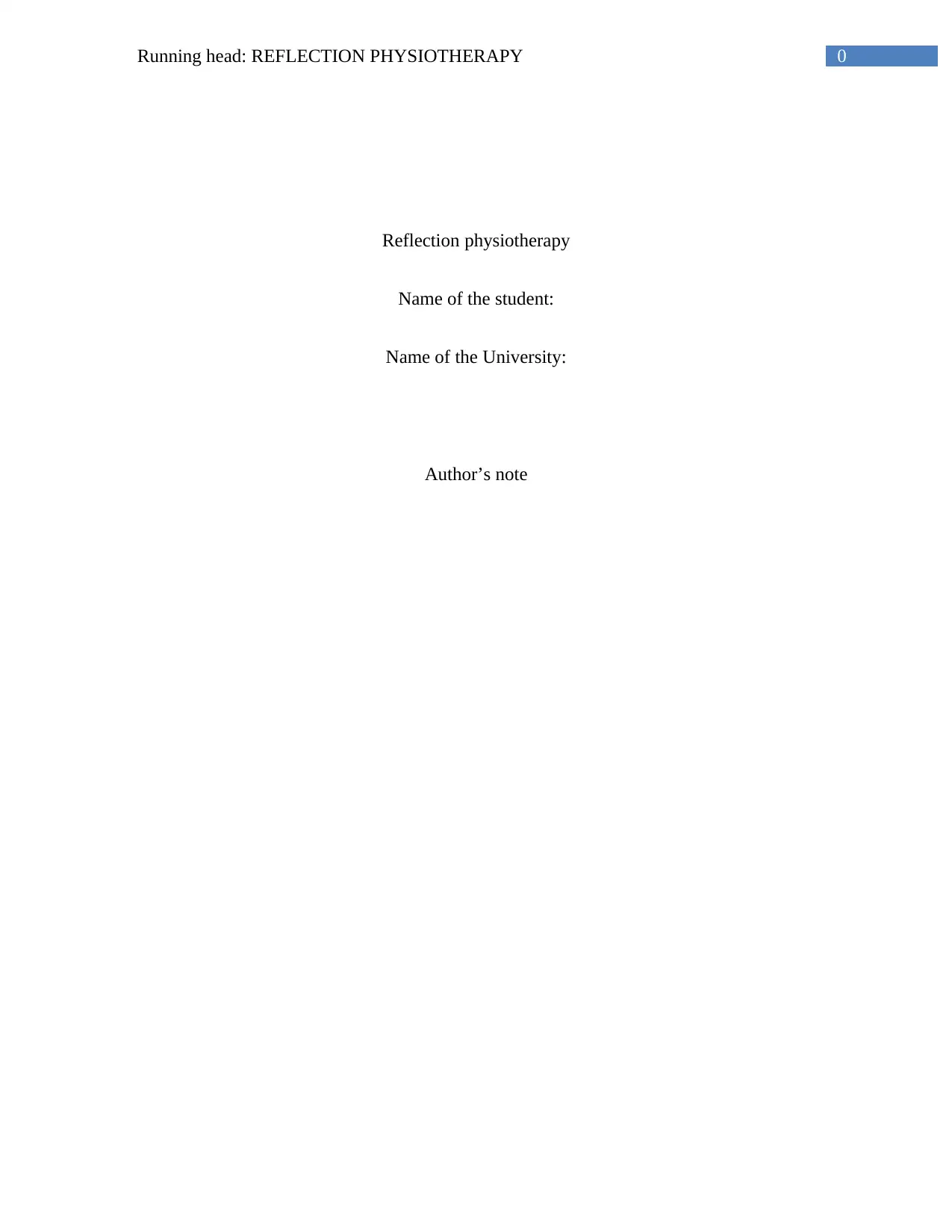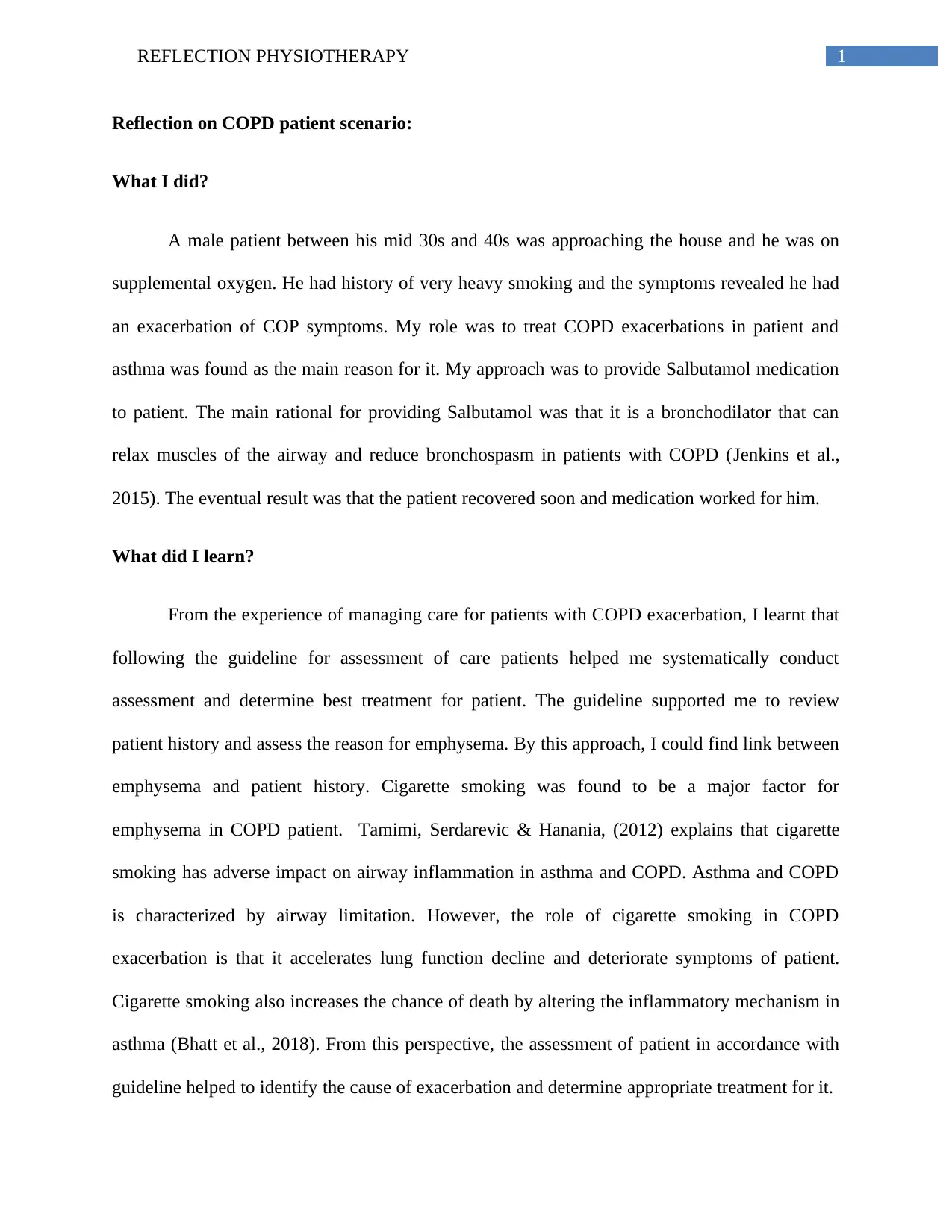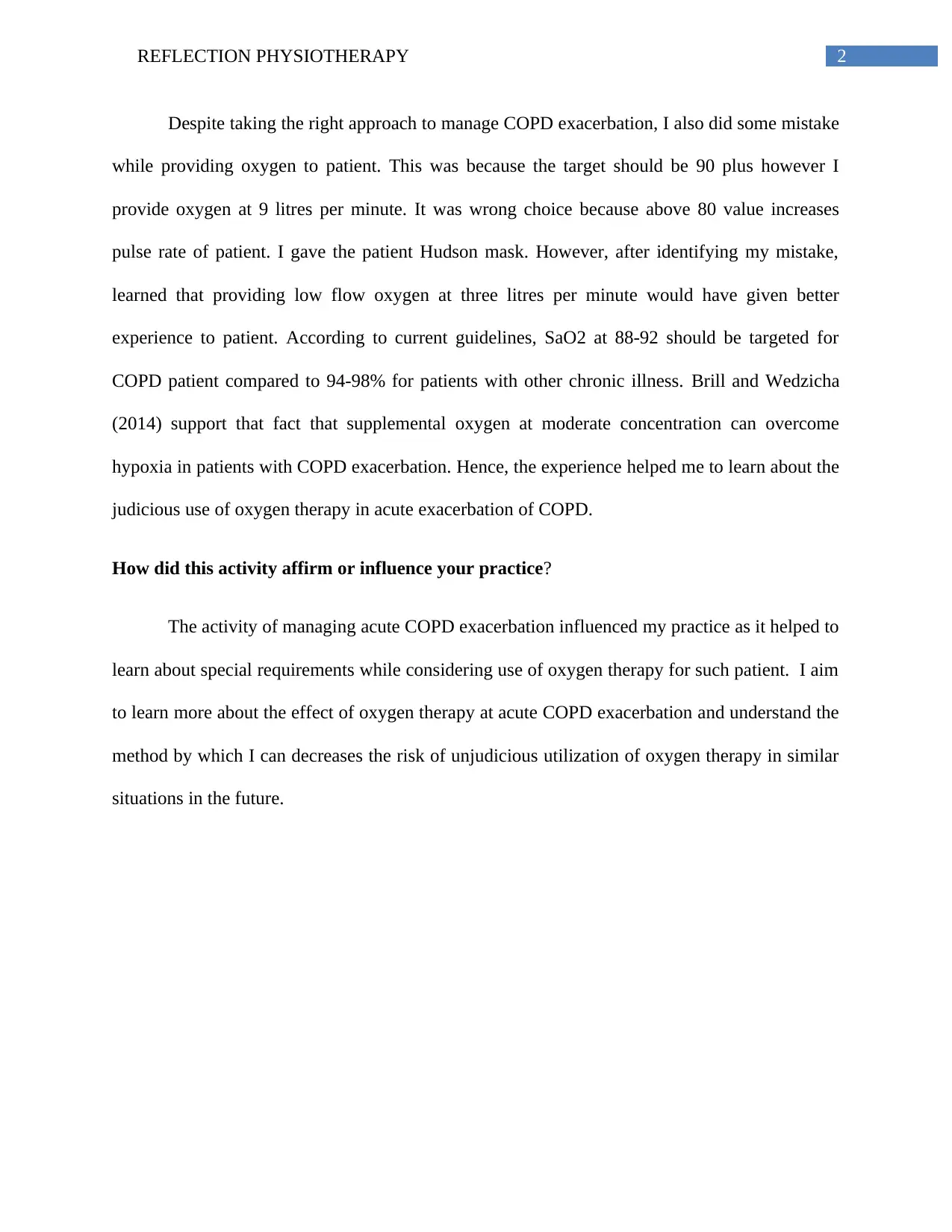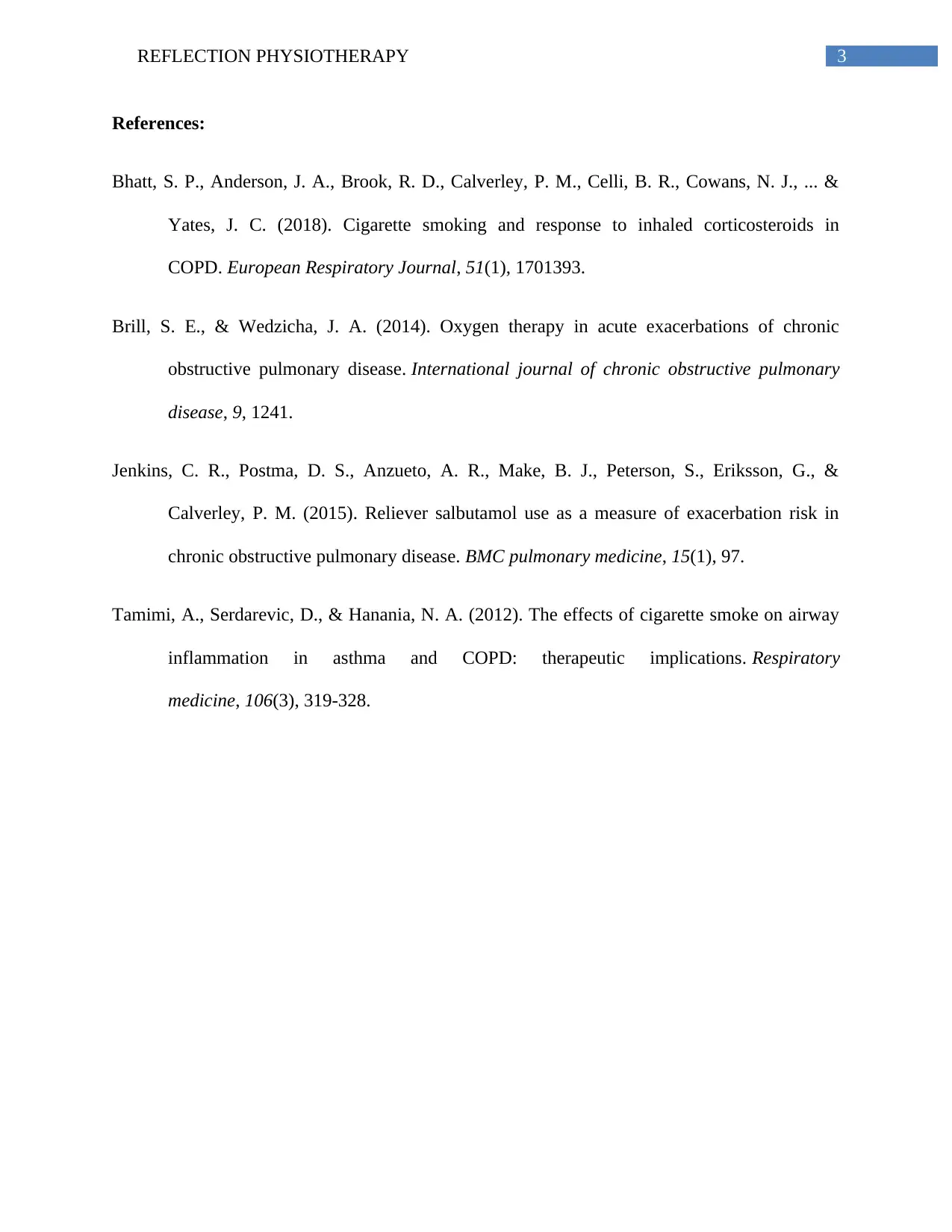Physiotherapy Reflection on Managing Acute COPD Exacerbation Case
VerifiedAdded on 2023/06/10
|4
|791
|214
AI Summary
This assignment is a student's reflection on managing a patient with a COPD exacerbation. The reflection covers the student's actions, including administering Salbutamol and oxygen therapy, and the rationale behind these actions. It discusses the lessons learned from the experience, particularly regarding the appropriate use of oxygen therapy in COPD patients, and how this experience will influence future practice. The reflection highlights the importance of following guidelines for patient assessment and tailoring treatment based on individual needs, while also acknowledging mistakes made and how to avoid them in the future. The student aims to learn more about the effects of oxygen therapy and decrease the risk of unjudicious utilization in similar situations in the future.
1 out of 4











![[object Object]](/_next/static/media/star-bottom.7253800d.svg)